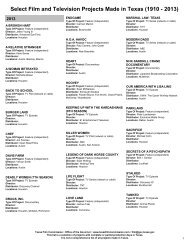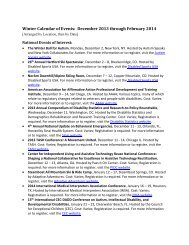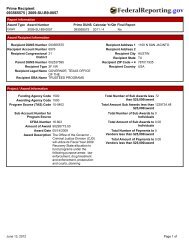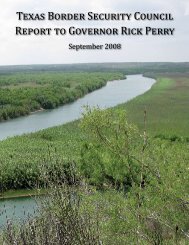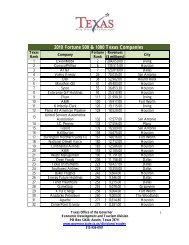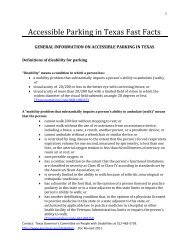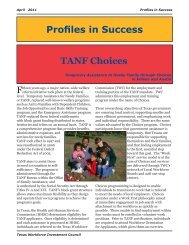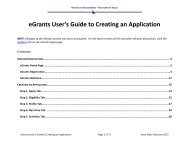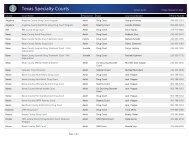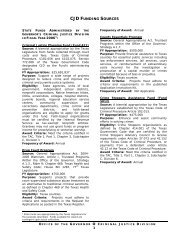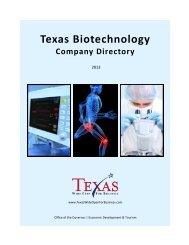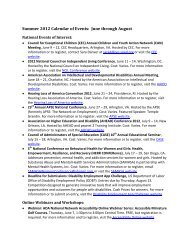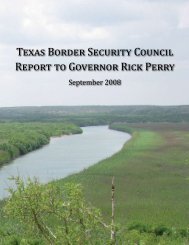People with Disabilities: A Texas Profile
People with Disabilities: A Texas Profile
People with Disabilities: A Texas Profile
You also want an ePaper? Increase the reach of your titles
YUMPU automatically turns print PDFs into web optimized ePapers that Google loves.
Regional Distribution<br />
The population of individuals <strong>with</strong> disabilities in <strong>Texas</strong> is not evenly distributed across the state.<br />
Appendix C contains a thematic map that illustrates the population of individuals <strong>with</strong> disabilities in each<br />
local workforce development area. Appendix D contains tables for each local workforce development<br />
area that detail the number of individuals <strong>with</strong> self‐care, hearing, vision, independent living, ambulatory,<br />
and cognitive difficulties in each local workforce area’s counties.<br />
The map and tables in Appendixes C and D use disability estimates developed by the <strong>Texas</strong> Department<br />
of Assistive and Rehabilitative Services (DARS). Estimates were calculated by multiplying the baseline<br />
population of each county by the county‐specific rates of disability. Population projections from the<br />
<strong>Texas</strong> State Data Center that assume 2000 to 2010 migration rates were used as the baseline population<br />
for each county. The county‐specific rates for each type of disability reported were extracted from the<br />
2009 to 2011 ACS three‐year microdata. For counties not included in the three‐year ACS data, allocation<br />
factors produced by the Missouri Census Data Center were used to align the respondents in the ACS<br />
geographic segments (called public use microdata areas) <strong>with</strong> the missing <strong>Texas</strong> counties.<br />
Similar to the disabilities data at the national level, local workforce development areas <strong>with</strong> large<br />
populations generally have the largest numbers of individuals <strong>with</strong> disabilities. The Gulf Coast Local<br />
Workforce Development Area, consisting of thirteen counties around the Houston area, has the most<br />
individuals <strong>with</strong> disabilities in the state: 603,682. The next largest population of individuals <strong>with</strong><br />
disabilities (323,247) is in the Alamo Local Workforce Development Area. The North Central and Dallas<br />
areas contain the third and fourth largest populations <strong>with</strong> 234,450 and 232,580, respectively.<br />
Harris County, the most populous county in the state, is home to 378,254 individuals <strong>with</strong> disabilities.<br />
The counties <strong>with</strong> the largest numbers of individuals <strong>with</strong> disabilities in 2011 were Harris, Bexar, Dallas,<br />
Tarrant, Hidalgo, El Paso, Travis, Nueces, Denton, and Cameron. Almost half (48.8 percent) of the state’s<br />
population of individuals <strong>with</strong> disabilities resided in these 10 counties.<br />
Demographic Characteristics of Individuals <strong>with</strong> <strong>Disabilities</strong> in <strong>Texas</strong><br />
The population of individuals <strong>with</strong> disabilities in <strong>Texas</strong> can be described by analyzing key demographic<br />
variables. More females reported having disabilities than males. Figure 7 indicates that in 2011, 11.8<br />
percent of females (1,519,271 individuals) and 11.3 percent of males (1,402,750 individuals) had a<br />
disability.<br />
16 <strong>Texas</strong> Workforce Investment Council



